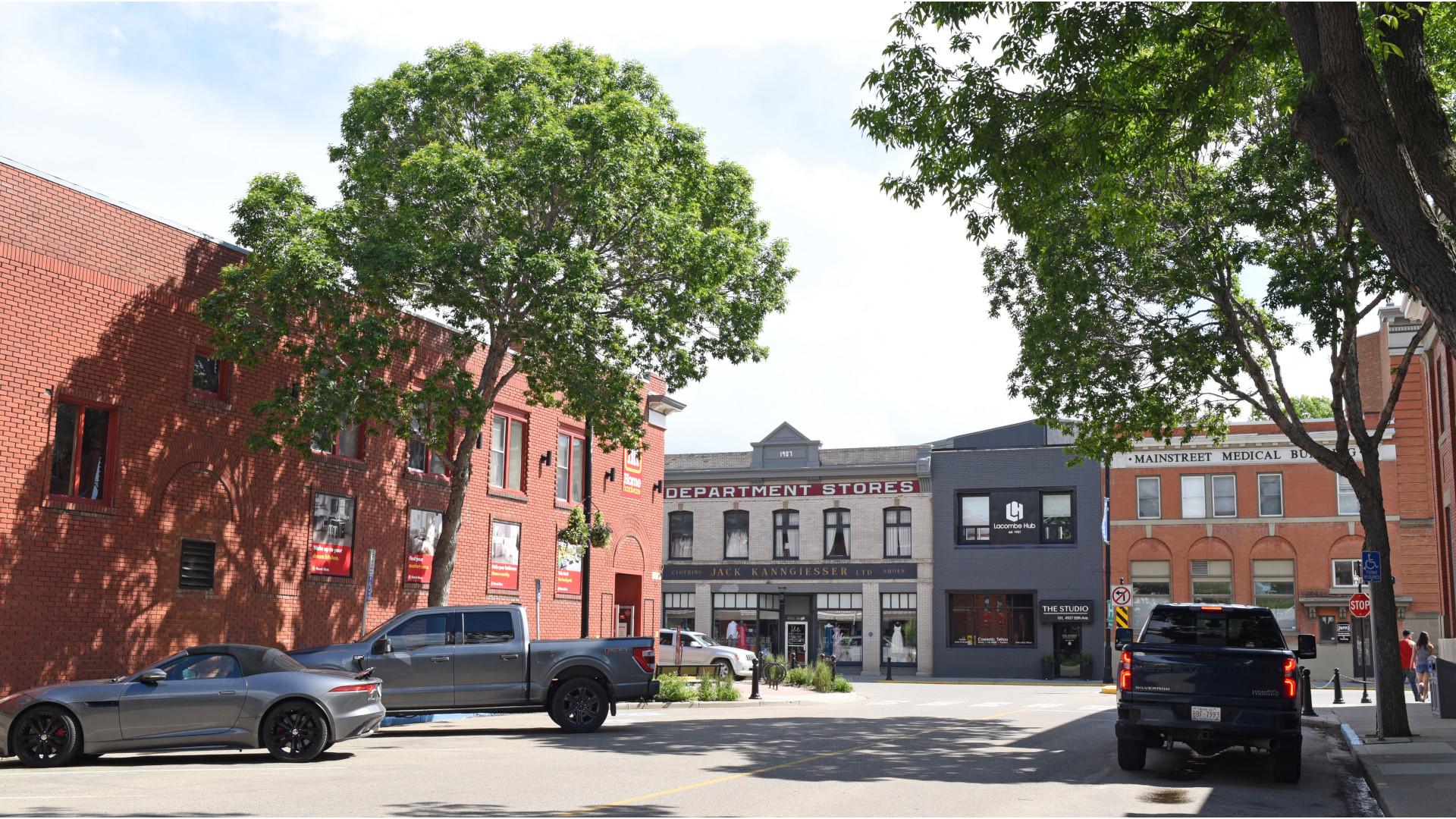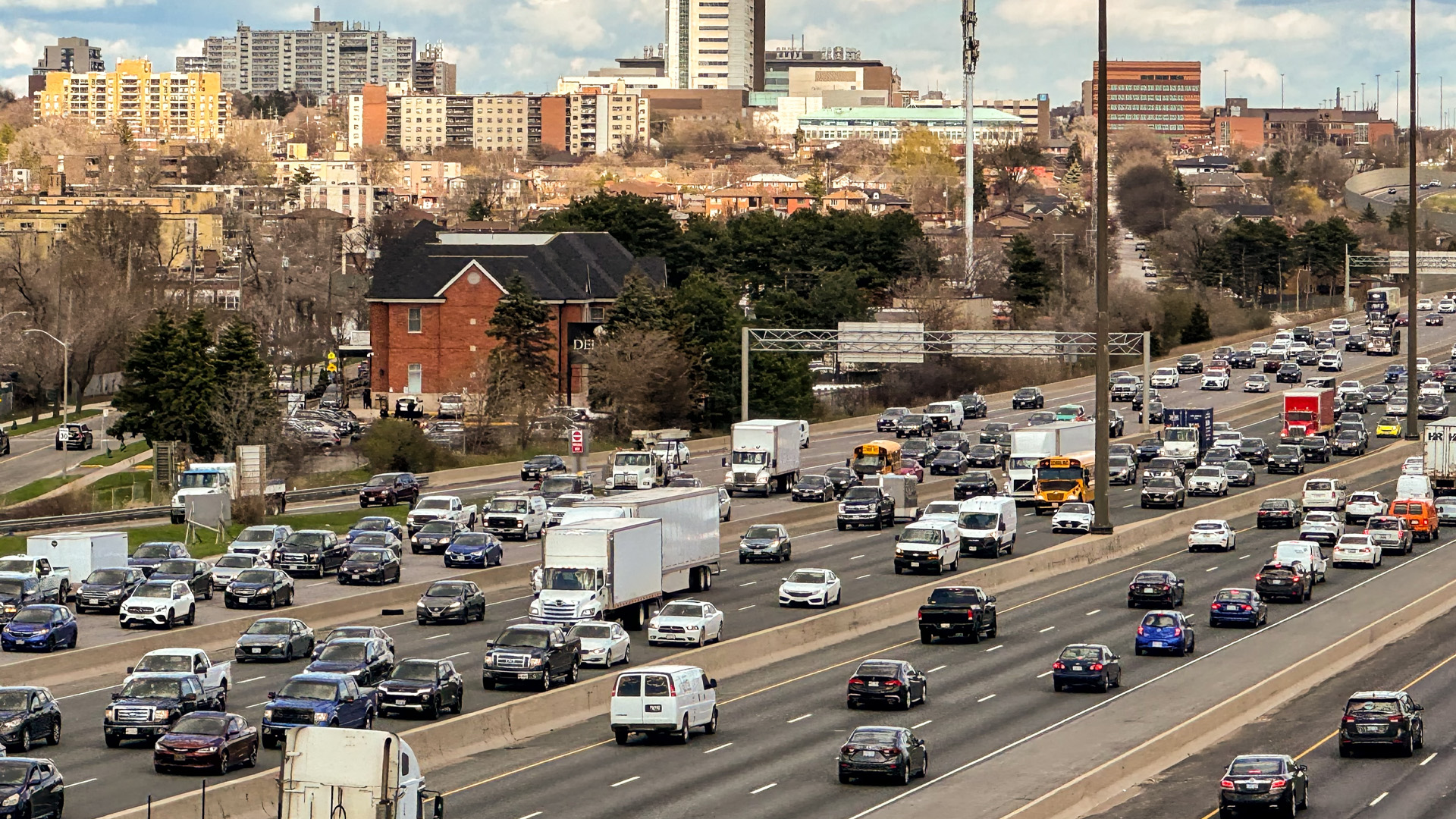
How can we sustain our cities? The short answer is by keeping our city centres healthy and viable. A major threat to our downtowns is congestion, an economic and environmental burden that will continue to worsen if left unchecked. Many voices have been raised in recent months underscoring the pressing need to deal with gridlock in our cities. The Canadian Chamber of Commerce has proclaimed that: ”œincreasing congestion is hindering the economic competitiveness and quality of life of Canada’s urban centres. It impacts Canada’s ability to attract and win new investment, as businesses report that access to roads and public transit are key factors in their business location and expansion decisions. The Prime Minister’s Task Force on Urban Issues concluded that ”œtraffic congestion is increasingly becoming an economic burden and an environmental threat.”
The Canadian Urban Transit Association has estimated that congestion costs about $2 billion annually in lost pro- ductivity in the Toronto region. Within 20 years, the cost will rise to about $7 billion a year. This is not just a Toronto problem. In Montreal, congestion is believed to cost com- muters $500 million annually; in Greater Vancouver, the annual cost is estimated at between $0.8 – 1.5 billion.
Congestion is a complex problem not easily solved. Local leaders and planners in London, England have suc- ceeded in implementing a creative solution with a £5 con- gestion charge ($12 Cdn) in the city centre. One year later, the scheme is showing remarkable success.
Prompted by rising concerns over increasing commuter delays and the cost of congestion in central London (£2 billion), Mayor Ken Livingstone cham- pioned the congestion charge as the centrepiece of his transport strategy. By the time the scheme was introduced in February 2003, Londoners were facing two to three minute delays for every kilometre travelled. The UK Department of Transport had calculated that conges- tion in central London was six times as bad as a typical UK city.
The scheme was launched on February 17, 2003. Motorists entering the central area of London between 7:00 a.m and 6:30 p.m. pay a £5 fee ($12 Cdn). The area affected is known as the ”œcongestion charge zone” (”œthe zone”) and comprises 8 miles2 (21 km2) in the heart of London, includ- ing the centres of government, law, business, finance, and entertainment.
The scheme applies only on week- days (except public holidays) and affects vehicles driving, loading, or parking on roads within the zone but not using or parking on the boundary known as the Inner Ring Road. Exemptions and discounts apply to a number of vehicles, including those that perform critical public services and those that are environmentally friendly.
Registered owners of every vehicle within the zone’s hours of operation are responsible for paying on time. A penalty charge of £80 ($180 Cdn) rises to £120 ($270 Cdn) with failure to pay within 28 days. Fines paid within 14 days are reduced to £40.
Transport for London (TfL) is the local government agency responsible for strategic and operational transportation planning in Greater London. In setting out the basis for the congestion charge, TfL identified three specific objectives:
-
to reduce traffic levels inside the zone by 10-15 percent;
-
to cut traffic delays by 15-25 per- cent inside the zone, and
-
to increase speeds by 10-15 per- cent inside the zone.
In order to gauge the success of the congestion charging scheme, TfL has developed a monitoring program with a broad set of indicators. The following results are drawn from their October 2002 report, ”œCongestion Charging: Six Months On.”
Improvements in congestion and speed have exceeded expectations. Traffic delays inside the charging zone have decreased by about 30 percent which is toward the high end of TfL’s expectations. Congestion levels are now the lowest they have been since surveys began in the 1980s. Drivers in the charging zone are spending less time in traffic queues, with time spent either stationary or travelling at below 10 kilometres per hour reduced by about 25 percent. Traffic is moving faster, with average speeds on roads in central London increasing from 14 to 17 km/h. Journey times are shorter: trips to, from, and across the charging zone have decreased by an average of 14 percent. As a result, commuters in London are experiencing much more reliable journey times ”” on average, a 30 percent improvement. At the same time, no measurable increase in con- gestion has been observed on other main roads in central London. Traffic management arrangements have suc- cessfully accommodated traffic divert- ing to the routes around the congestion charging zone.
There has been a substantial reduction in the number of cars com- ing into central London. About 60,000 fewer car movements per day now come into the charging zone. Allowing for multiple trips, this would equate to 50,000 cars. Commuters have changed their travel behaviour in the following ways (figure 1):
-
About 50 – 60 percent of former car-drivers transferred to public transport;
-
15 – 25 percent switched to car share, motorcycle or pedal cycle, or have made other adjustments such as travelling outside charg- ing hours or making fewer trips to the charging zone. Car occu- pancy is up by 10 percent.
-
20 – 30 percent have diverted to other roads around the zone
Public transport is coping well with the additional passengers. Prior to the introduction of congestion charging, the overwhelming majority (85 percent) of those travelling to central London in the morning peak were already using rail, tube or bus. While the incremental increase may appear to be small, local impacts are more significant. About 15,000 additional passengers are now using the buses each morning peak ”” in line with TfL’s initial estimates. Extra bus passengers travelling to the charging zone are being accommodated by increased bus network capacity. Bus capacity to the zone was increased by 11,000 spaces in the peak periods, through a combination of new buses, altered routes, and higher frequencies.
Bus passengers are enjoying more reliable service as all vehicular traffic in central London benefits from reduced levels of congestion. Excess waiting times are down by over one-third on routes serving the charging zone (an indication of the time that bus passengers have to wait above that expected if the route was operating as scheduled).
Contrary to expectations, under- ground usage in the peak period has declined by 11 percent during the past year. This anomalous result is under review by TfL but no doubt, is linked to temporary tube line closures in 2002.
Revenues from the scheme are less than originally forecast. TfL estimates that net revenues in 2003/4 will be £68 million ($160 million), far short of the original estimate of £120 million. Revenue is down primarily because the scheme has exceeded expectations for reducing the number of vehicles enter- ing the zone. This may be good news for TfL, but on the other hand, higher than expected levels of evasion are also con- tributing to lower revenues. More people are successfully dodging payment.
By law, revenues must be reinvest- ed in London’s transport system. TfL has already taken action to improve administration of payment and penal- ty collection. Net revenues in future years should rise to £80 – £100 million.
On a macro-scale, the economic effects on London are positive. Cost- benefit analyses are showing benefits of £180 million a year from reduced con- gestion. Benefits come from individual and business time savings due to more reliable journey times, reduced waiting times for buses, reduced traffic delays, and reduced fuel consumption
Administrative costs, including scheme operations, additional buses, and TfL overhead, will be £130 million this year. Net benefits in 2003/04 are around £50 million ($120 m). Estimates of environmental benefits have not yet been calculated.
More specifically, the impact on retail activity is raising concern. Retail activity in central London decreased by 7 percent in the past year. Fewer customers and reduced sales have prompted some business owners to blame the congestion charge. Surveys undertaken by various government and business associations yield mixed results. However, most agree that it is difficult to isolate the effect of the congestion charge on retail activity, given rising concerns about terrorism in central London, fewer tourists, under- ground closures and an overall economic slowdown. TfL is working with business organisations to gain a better under- standing of the impact of the congestion charge on retailing.
Public acceptance of the scheme is good and support is growing. In a recent survey, 70 percent of London residents consider the scheme to be ”œvery” or ”œfairly” effective in reducing congestion in central London. Senior executives in the City of London are the most supportive, with 7 percent in favour, according to a 2003 MORI Survey for the City of London.
By most measures, congestion charg- ing in London is succeeding beyond expectations. The scheme is drawing praise from some of its harshest critics, including Prime Minister Blair. In order to assess its relevance for Canadian cities, one must first understand the founda- tions for the scheme’s success in London. The following factors were crucial:
-
Unbearable levels of congestion. Gridlock in London had become commonplace. In 2002, motorists spent on average more than four minutes to travel one kilometre in central London. By contrast, in other large urban centres in England, vehicles were travelling the same distance in less than half a minute. Without intervention, traffic in London was expected to worsen with a projected 14 per- cent rise in employment and 10 percent increase in population within the next 15 years.
-
Commuter behaviour. Londoners have a long tradition of public transport usage. Even before the introduction of congestion charg- ing, less than 15 percent of all commuters drove a car into cen- tral London.
-
Investment in infrastructure. Prior to the scheme’s introduction, Transport for London invested in new buses and new routes, adding an additional 11,000 spaces for the peak period. More than £100 million was invested in road works. Furthermore, the existing network of underground, rail, and bus service is extensive, notwith- standing the fact that the infrastruc- ture is aging and underfunded.
-
Support from business community. From the outset, most of the major business organisations supported the concept of a congestion charge. Frustrated by unreliable goods and service delivery as well as lost employee time, business executives were ready for a bold solution.
-
Leadership. Mayor Ken Livingstone articulated a vision for London, and made conges- tion charging the centrepiece of his strategy to improve trans- portation in central London. He fulfilled a commitment to intro- duce the scheme in his first term of office.
Do the elements for success exist in Canada’s cities?
First and foremost, congestion appears to be plaguing many of our largest cities and threatening the eco- nomic efficiency of our urban regions. There is evidence to suggest that con- gestion will worsen unless a solution is found soon. For instance, the average commute in the Greater Toronto Area could be 50 per cent longer by 2021 unless public transit gets more finan- cial support.
Is a congestion charge the answer? Four critical conditions must be assessed.
Could a large Canadian city like Toronto or Vancouver accommodate a sig- nificant shift to public transport? Not immediately.
Nowhere in Canada is the public transit network as dense or as exten- sive as London’s. In part, this may be attributed to the differences in urban form. Cities in Canada have developed as sprawling urban regions at densities well below that of Greater London (4,600 persons/km2). By contrast, Metropolitan Toronto’s density is approximately 2,600 persons/km2; Calgary’s is half that at 1,250. Lower density development is more difficult to serve effectively with transit. (www.demographia.com provides com- parable data for urban regions. In square miles, greater London and greater Toronto are similar at just over 600m2).
Furthermore, public transport infrastructure in Canada’s cities requires significant investment in upgrading, rehabilitation, and expan- sion to meet the needs of our growing urban centres. Nation-wide, approxi- mately $13.6 billion is required to meet transit infrastructure in the next five years; more than $8 billion is required in the Greater Toronto Area alone.
Would our urban residents switch from cars to buses or subways or car-shar- ing to journey downtown? Modifying commuter behaviour to effect a signif- icant shift in modal choice is challeng- ing (but not impossible) in Canada.
Our urban commuters are much more car-dependent than commuters in the UK. Each weekday morning, 110,000 cars come into downtown Toronto. London has three times the number of workers coming downtown each morning, but only 20 percent more cars (132,000).
No city in Canada approaches the level of public transport usage in London. Toronto has the highest share of transit commuters: 66 percent of people travelling downtown each morning take transit, but only 40 per- cent do so in Vancouver. The compara- ble figure for London is 85 percent.
Would local Chambers of Commerce or business leaders support and promote congestion charges in Canada? In many cities, support from the business com- munity could be expected.
Business leaders in urban regions across Canada are becoming more and more concerned about congestion. Productivity is negatively affected, and quality of life suffers. The costs of delay due to gridlock are well-documented. A recent KPMG study estimates that con- gestion in Montreal, Ottawa, Vancouver, and Toronto adds $300 million to the costs of goods movement every year.
On the other hand, in the absence of better information on the effects of congestion charging on retail activity, downtown retailers can be expected to raise serious concerns.
Would commuters in our large urban regions accept a charge to travel into or through the downtown? Not likely; cer- tainly not eagerly.
Strong public opposition could be expected. Mayor Ken Livingstone faced significant public opposition in early rounds of consultation. Some res- idents went as far as mounting an anti- congestion-charge campaign by setting up a www.sod-u-ken.co.uk website. Successive rounds of consulta- tion garnered more support for the mayor, although significant opposi- tion remained until the day the charge came into effect. One year later, the public generally (but not unanimous- ly) regard the scheme as successful, with some business and community leaders calling for an expansion of the program to widen the congestion charge zone.
In the event of strong public oppo- sition, local political leadership will be difficult to achieve ”” difficult, but not impossible. After all, a mayor is elected to carry out his or her vision for a bet- ter city, and innovative solutions are always challenging to carry out.
Congestion-charging is a single, but important tool that has been effec- tive in unlocking gridlock in central London. Shorter journey times, fewer cars, and improved bus service are con- tributing to an improved quality of life for commuters, businesses and resi- dents. One year after its introduction, the congestion charge has restored cir- culation to the heart of London. Canada’s largest cities have much to learn from the London scheme.







